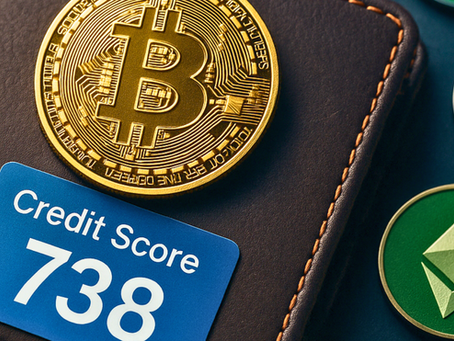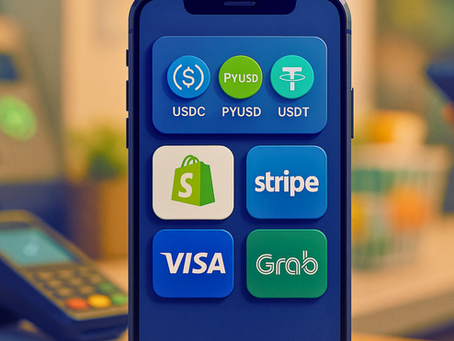top of page
Search


Smart Hardware Wallets Are Here. Is Cold Storage Really Still Cold?
More than USD 2.17 billion in crypto was stolen in the first half of 2025 and hardware wallet market growth is accelerating. This article takes a hard look at how wallets shifted from offline isolation toward connected operations and what that means for self-custody moving forward.
-
Nov 1211 min read


25% of Bitcoin Could Be Exposed to Quantum Computers
Around one quarter of all Bitcoin, nearly four million coins, sit in addresses where public keys are already visible. That detail leaves them exposed once quantum computers reach the scale to reverse those keys. This piece explains how that exposure emerged, when it could matter, and what current research is doing to keep Bitcoin secure.
-
Oct 287 min read


Blockchain Meets Satellite Internet for a Verifiable Global Connection
Satellites and blockchain are starting to share the same orbit. With projects like Spacecoin, WISeSat, and Bearcat Space leading real on-chain transmissions from space, a new era of transparent and decentralized connectivity is taking shape. This article examines how the two technologies are converging to expand access, strengthen trust, and redefine how data moves across the planet.
-
Oct 157 min read


Can Bitcoin Handle Permissionless Liquidations?
Bitcoin processes blocks every ten minutes on average while DeFi liquidations on Ethereum occur within seconds. This analysis examines whether Bitcoin can realistically sustain permissionless liquidation systems, from current sidechain experiments to upcoming proposals like OP_CAT and OP_CTV, and the challenges that remain.
-
Sep 307 min read


Can You Trust an AI Agent With Your Wallet?
Autonomous agents are moving from theory to practice in crypto. They now handle wallet interactions, lending positions, and asset transfers without constant human input. Supporters see speed and efficiency, while skeptics warn that one coding flaw could drain funds with no recovery. This article examines what these agents are doing today, how users are responding, and the guardrails needed before wider adoption.
-
Sep 96 min read


How Blockchain Analytics Became the Compliance Department of Finance
Blockchain analytics has moved from niche software to a central tool for global finance. By turning open ledgers into live compliance dashboards, firms like Chainalysis, Elliptic, and TRM Labs are now as vital to oversight as banks once were. With tokenized treasuries and money market funds on the rise, these platforms are shaping how trust and regulation meet on-chain.
-
Sep 26 min read


Who Really Owns Bitcoin Now? Surprising Facts Few Are Talking About
Bitcoin’s ownership is changing in ways few people notice. Large ETFs now hold over a million coins, while governments and top wallets control a sizable share. At the same time, smaller holders and self-custody wallets are quietly growing. This article breaks down who actually owns Bitcoin today, what the numbers reveal, and why these trends matter for adoption, liquidity, and influence.
-
Aug 267 min read


Who Owns Your Web3 Domain
Who controls Web3 domains on ENS and Unstoppable, how ownership works in code and policy, and simple checks before you buy.
-
Aug 195 min read


Quantum-Proof Wallets Are Coming. Who’s Actually Building Them?
Every public blockchain wallet today depends on math too complex for classical computers to reverse. That reliable gap between public and private keys has made modern wallets secure for years. But that math dates to a time before quantum processors existed.
Quantum machines don’t operate the same way. They tackle mathematical problems using quantum rules rather than brute force. In principle, algorithms like Shor’s can break the cryptography that protects Bitcoin, Ethereum, a
-
Jul 287 min read


Gas Fees? What Gas Fees? Web3 UX Finally Works Like It Should
Gas used to be the price you paid for trying. Whether it was sending tokens, minting NFTs, or using a DEX, every action came with a cost and confusion. Fees spiked, confirmations lagged, wallets crashed, and apps asked for approvals most users didn’t understand. The problem wasn’t just technical. The experience made people walk away before they got started. What mattered wasn’t new infrastructure. What helped was removing the friction that had no reason to be there.
-
Jul 79 min read


What Running Your Node Really Takes
Blockchains are built to remove dependence on gatekeepers. But most people using them still rely on someone else to show them what's happening.
They use apps. They use wallets. They use interfaces that pull data from centralized services. The assumption is simple: if the balance shows up, the system must be working.
But there's a missing piece in that chain of trust. And it's the one function that actually checks whether the rules are being followed without asking for p
-
Jun 239 min read


One Wallet, One Credit Score?
A blockchain wallet with no name, no documents, and no conventional profile can now reveal more about financial behavior than most credit reports.
Conventional scoring systems still draw from a narrow loop of credit cards, bank loans, and employment records. They reward familiarity with banks and established institutions while excluding those who earn in crypto, borrow on-chain, or build portfolios without fiat accounts.
The record of activity is already there. Every repaym
-
Jun 105 min read


Web3 Social Apps Are Actually Useful Now
Web3 social platforms have been around for years, but few have managed to prove they can support steady, public use without depending on financial incentives or hype cycles.
Apps like Farcaster and Lens Protocol are now functioning beyond early adopters. They’ve moved past token trials and into daily interaction. Users are posting, replying, collecting content, and earning — without depending on centralized feeds or advertising systems. The architecture is open.
-
Jun 28 min read


Stablecoins for Payments: Who’s Actually Using Them?
Stablecoins once existed primarily within crypto exchanges, serving mostly traders who needed stability between trades. That limited role has begun to evolve significantly. Major companies such as Stripe, Visa, PayPal, Shopify, and Grab are currently processing real-world payments using stablecoins. These integrations are not pilot projects or future promises—they’re active payment methods customers already use...
-
May 195 min read


DeFi vs. TradFi
Tokenization is no longer a concept waiting on approval. Bonds, loans, and treasuries are now being issued, transferred, and settled using blockchain rails. No press release needed—just verifiable contracts, transparent records, and markets that work without relying on old timelines.
More than $6.9 billion in U.S. Treasuries now trade as digital tokens. On-chain private credit has climbed past $9.6 billion, spanning use cases from stable lending pools to real-world financi
-
May 125 min read


Can You Send Bitcoin Without the Internet? Here’s What Actually Works
Internet access breaks more often than it feels. When it does, most payment systems freeze. Bitcoin was designed differently. Even without Wi-Fi, mobile data, or working cables, Bitcoin transactions can still move — riding through satellites, crossing mesh networks, and traveling inside text messages. Today, these methods are not experimental ideas...
-
Apr 286 min read


Tokens vs Stocks — Ownership Without the Old Rules
Ownership used to mean waiting for markets to open, filling out forms, and trusting a middle layer to settle the trade. Stocks made that mod
-
Apr 155 min read


5 Blockchain & Web3 Books That Actually Make Sense for Beginners
There’s no shortage of content claiming to explain blockchain or Web3. Guides, whitepapers, posts, pitch decks, videos — all trying to simplify something that’s anything but simple when stripped of shortcuts and half-definitions.
What’s harder to find is writing that holds up. Work that explains how these systems operate, w
I kept searching for something that felt honest. Something that didn’t assume I already knew the answers. These five books didn’t try to impress—they h
-
Apr 73 min read


Tokenization of Everything — Why It’s Closer Than You Think
Ownership used to be static.
A bond sat in a custodian account.
A building changed hands through months of contracts.
A rare car or...
-
Mar 258 min read


📖 Ben & the Bitcoin Treasure: A Story That Makes Digital Money Real for Kids
A child taps a screen and a game loads. A parent scans a phone, and groceries are paid for.
Money is everywhere, yet invisible...
-
Mar 173 min read
bottom of page
.png)